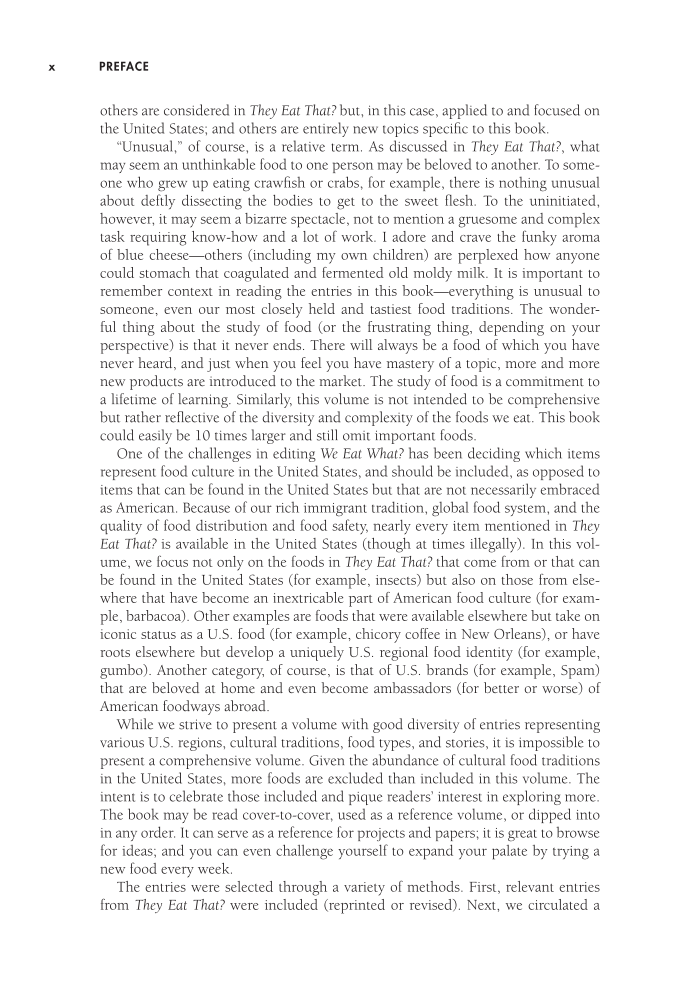x Preface others are considered in They Eat That? but, in this case, applied to and focused on the United States and others are entirely new topics specific to this book. “Unusual,” of course, is a relative term. As discussed in They Eat That?, what may seem an unthinkable food to one person may be beloved to another. To some- one who grew up eating crawfish or crabs, for example, there is nothing unusual about deftly dissecting the bodies to get to the sweet flesh. To the uninitiated, however, it may seem a bizarre spectacle, not to mention a gruesome and complex task requiring know-how and a lot of work. I adore and crave the funky aroma of blue cheese—others (including my own children) are perplexed how anyone could stomach that coagulated and fermented old moldy milk. It is important to remember context in reading the entries in this book—everything is unusual to someone, even our most closely held and tastiest food traditions. The wonder- ful thing about the study of food (or the frustrating thing, depending on your perspective) is that it never ends. There will always be a food of which you have never heard, and just when you feel you have mastery of a topic, more and more new products are introduced to the market. The study of food is a commitment to a lifetime of learning. Similarly, this volume is not intended to be comprehensive but rather reflective of the diversity and complexity of the foods we eat. This book could easily be 10 times larger and still omit important foods. One of the challenges in editing We Eat What? has been deciding which items represent food culture in the United States, and should be included, as opposed to items that can be found in the United States but that are not necessarily embraced as American. Because of our rich immigrant tradition, global food system, and the quality of food distribution and food safety, nearly every item mentioned in They Eat That? is available in the United States (though at times illegally). In this vol- ume, we focus not only on the foods in They Eat That? that come from or that can be found in the United States (for example, insects) but also on those from else- where that have become an inextricable part of American food culture (for exam- ple, barbacoa). Other examples are foods that were available elsewhere but take on iconic status as a U.S. food (for example, chicory coffee in New Orleans), or have roots elsewhere but develop a uniquely U.S. regional food identity (for example, gumbo). Another category, of course, is that of U.S. brands (for example, Spam) that are beloved at home and even become ambassadors (for better or worse) of American foodways abroad. While we strive to present a volume with good diversity of entries representing various U.S. regions, cultural traditions, food types, and stories, it is impossible to present a comprehensive volume. Given the abundance of cultural food traditions in the United States, more foods are excluded than included in this volume. The intent is to celebrate those included and pique readers’ interest in exploring more. The book may be read cover-to-cover, used as a reference volume, or dipped into in any order. It can serve as a reference for projects and papers it is great to browse for ideas and you can even challenge yourself to expand your palate by trying a new food every week. The entries were selected through a variety of methods. First, relevant entries from They Eat That? were included (reprinted or revised). Next, we circulated a
Document Details My Account Print multiple pages
Print
You have printed 0 times in the last 24 hours.
Your print count will reset on at .
You may print 0 more time(s) before then.
You may print a maximum of 0 pages at a time.




































































































































































































































































































































































